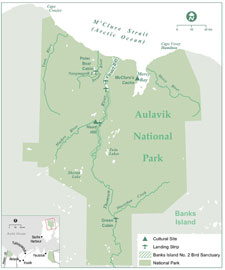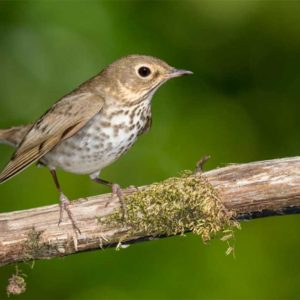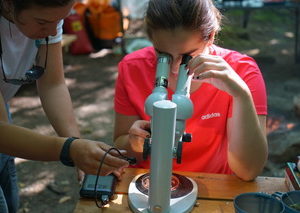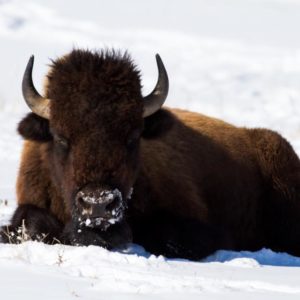[two_third]I’m happy to report that comments Nature Canada provided on the draft management plan for Aulavik National Park in 2011 have received a nod in the official 2012 version of the plan, which was tabled in Parliament earlier this summer. We received a hard-copy of that official, legal version of the plan on Tuesday and it is available for download here.
Aulavik National Park is located on Banks Island in the Northwest Territories and fully encompasses another federal protected area, the Banks Island No. 2 Migratory Bird Sanctuary, as well as the globally significant
Thomsen River Important Bird Area. The sanctuary was integrated into the park when it was established in 1992 and is managed through a
Memorandum of Understanding between Parks Canada and the Canadian Wildlife Service, the government agency responsible for National Wildlife Areas and Migratory Bird Sanctuaries.
We suggested three things be reflected in the 2012 management plan:
i) Use the Thomsen River Important Bird Area and its resident wildlife populations (especially birds) as indicators in the park’s ecological integrity monitoring program;
ii) Clearly state the fact that the subsurface lands under the bird sanctuary are fully protected as part of the national park. This would make the Banks Island No. 2 sanctuary exceptional, perhaps unique, among bird sanctuaries in Canada.
iii) Encourage Parks Canada to assume full administrative responsibility and control of Banks Island No.2, given the plan to manage it as part of the national park.
You can read Nature Canada’s full comments on the 2011 draft management plan for the national park
here.
I’m glad to see that the 2012 plan calls for coordination between Parks Canada and the Canadian Wildlife Service, given their shared responsibility for the sanctuary both under the
Canada National Parks Act, the
Migratory Birds Convention Act (1994) and their respective regulations. Also, the 2012 plan calls for a new agreement between the two agencies that will “outline in specific terms the parameters that will guide co-operative management of the bird sanctuary”.
The plan also cites the Important Bird Area as one of five aspects of the park that will be the focus of a Strategic Environmental Assessment for the management plan (required by the federal cabinet). One might argue that the above info would have been present in the plan regardless of Nature Canada’s input, but whatever the case it’s obvious that our comments resonated with Parks Canada.
I want to jump back to the second matter we addressed in our 2011 comments to make sure its significance is not overlooked. The laws used to create a national park require that all the lands within the park boundaries – from the mountaintops to the core of the Earth – are fully protected and off-limits to industrial development like mining and oil and gas exploration or extraction. The same is not true for Migratory Bird Sanctuaries and National Wildlife Areas in Canada.
Strangely, the laws that are used to create Migratory Bird Sanctuaries and National Wildlife Areas only protect the surface lands, leaving the lands beneath those protected areas wide open for development. There are regulations and restrictions in place to limit and prevent access to the lands within and beneath these areas, but anyone who has existing mineral or oil and gas rights is technically entitled to access them. Parks Canada has the legal ability to avoid this sticky ‘mine vs. yours’ issue, but the Canadian Wildlife Service does not. That’s how we end up with sites like the
Suffield National Wildlife Area that is home to 20 federally listed species at risk, as well as a proposal for
1,275 new shallow gas wells.
Nature Canada recently published a report on the need to close the legal loopholes that leave our federal protected areas for wildlife exposed to the threat of natural resource extraction, which we called
The Underlying Threat.
Just for the record, Nature Canada recommended that Parks Canada take over responsibility for the Banks Island No. 2 sanctuary given the substantial difference in resources that agency has to manage the site compared to the Canadian Wildlife Service. This was not a vote of non-confidence on the exceptional and incredibly competent staff at the Wildlife Service; it is simply a reflection of the many rounds of significant funding and program cuts that the WIldlife Service has endured almost routinely since the early 1980s. We issued a report on this issue in 2002 called
Conserving Wildlife on a Shoestring Budget, and the federal Commissioner for the Environment and Sustainable Development noted that funding and capacity were still a problem for the Wildlife Service in his
March 2008 status report.
[/two_third] [one_third_last]

Aulavik National Park and Banks Island
No. 2 Migratory Bird Sanctuary (taken
from Parks Canada)

Black Brant, one of the species for which the Thomsen
River Important Bird Area was designated.
[/one_third_last]





